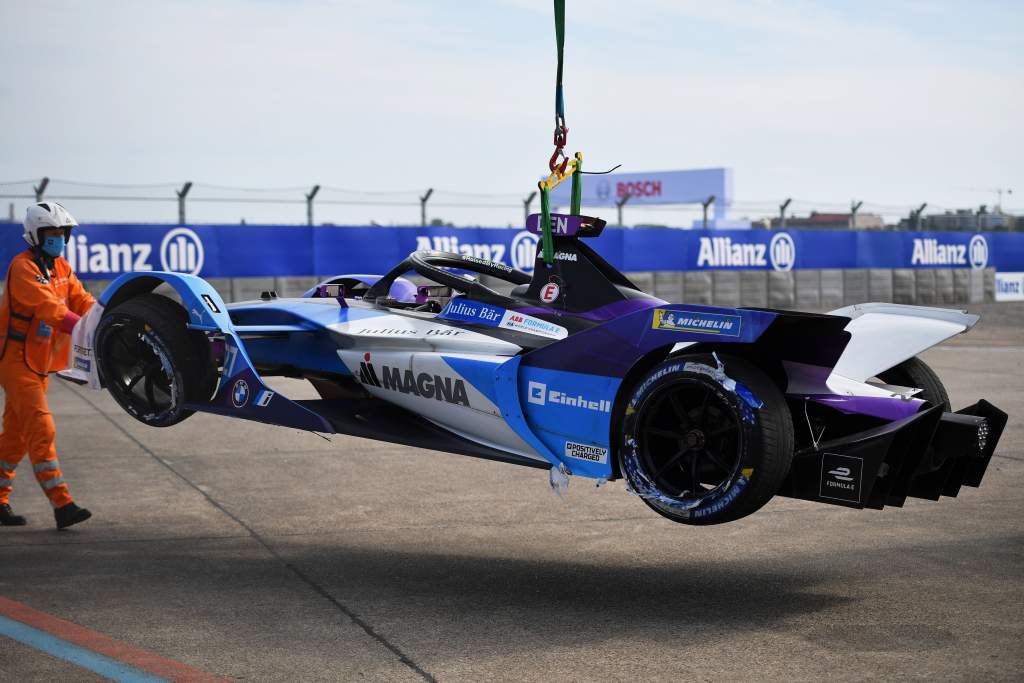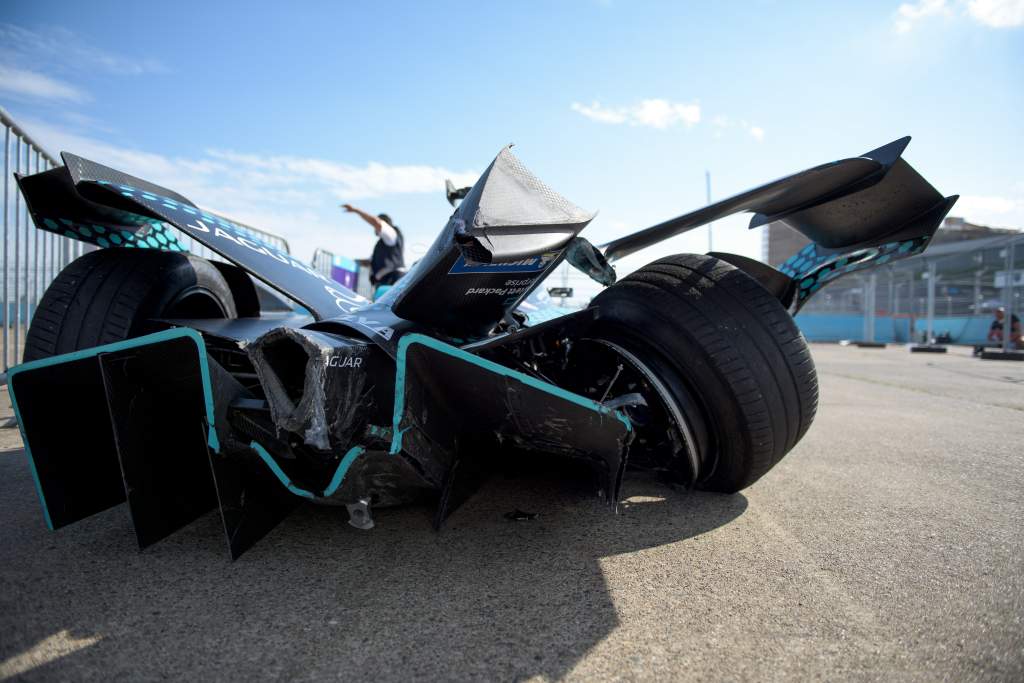The failures behind the dramatic crashes that ruled leading contenders Mitch Evans and Jake Dennis out of the 2021 Formula E world championship fight early in the Berlin decider have turned out to be similar inverter issues.
The two manufacturers concerned, Jaguar and BMW, are continuing to work to understand precisely why their ‘off-the-shelf’ components suffered the failures in the race that effectively gave Mercedes’ Nyck de Vries the title.
Evans’s Jaguar was well placed in third position on the grid, 10 places ahead of de Vries for the final round, but failed to get off the line.
Had Evans have won the race he would have taken the title whatever de Vries would have been able to achieve.
Instead, de Vries was able to take a battling eighth position and seal the crown by four points over Edoardo Mortara – who was eliminated from the final race when he slammed into Evans’s static car.
Jaguar undertook a lengthy investigation into the reason why Evans was unable to get his Jaguar I-Type4 off the Tempelhof grid.

A team spokesperson told The Race that “a supplied component failure within the inverter is currently being investigated so it doesn’t reoccur”.
Some teams are known to have suffered suspected issues with modules within the inverters on previous occasions in Formula E.
These have failed at peak torque during launches, but most have occurred in testing rather than races as team have large tolerances on the ‘lifing’ of such parts.
Further mystery surrounds the issue as there are several much grippier surfaces than the Tempelhof track on the Formula E calendar. This is believed to have caused initial confusion for at least BMW as the inverter is not unduly stressed when it regulates the voltage and the current from the motor.

Further details on Dennis’s issue are still yet to be ascertained by BMW, which has now officially left Formula E as a full manufacturer but will continue to supply the new-look Andretti team in 2022.
Dennis was just four points in arrears to de Vries ahead of the final race and started from ninth position on the grid.
But he lost control under braking at the first corner at the restart following the Evans/Mortara crash.
Andretti team principal Roger Griffiths said the issue was still being investigated but the basic reason for Dennis’s car malfunctioning had emerged.
“It was a power inverter failure,” Griffiths told The Race.
“But the reason why is not being communicated to us from BMW yet.
“The [non-BMW] part went back to the supplier to be to be fixed, but it was a catastrophic failure obviously.”
The inverter transforms the DC battery current to AC for the motor. It also regulates the voltage, current and format of the electrical signal. It does so using a system of switches that are able to carry out thousands of operations per second.
The primary function of the inverter, therefore, is to be used as a mechanism for controlling both the demand put on the motor by the ECU. Efficiency is a key attribute to its design especially in controlling thermal properties.
Griffiths discounted the lengthy red flag period after Evans and Mortara’s accident having being directly related to the episode, saying: “I don’t think it has anything to do with a red flag because we’ve done red flags before and these things power down when they’re not in use.”

The Race has learned that several manufacturers have suffered some issues with the Silicon Carbide (SIC) elements of their inverters in the Gen2 period of racing.
These are believed centre mostly on the MOFSET (metal–oxide–semiconductor field-effect transistor) elements of the technology, which is the switching device within the inverter.
At present there is no suggestion that either Dennis or Evans suffered such an issue in their Berlin incidents.




